Milwaukee Had A Drop in College Voters, Dramatic Shift in South Side Party Preference
Biden and Clinton had dramatically different performances in Milwaukee. See how.
Joe Biden and Hillary Clinton both won the City of Milwaukee by a margin of more than 58 points, adding over 143,000 votes to their statewide totals. But where those votes came from varied dramatically, demonstrating a mix of pandemic-induced temporary shifts and potentially long-term trends.
In 2020, 247,679 residents cast a ballot versus 247,836 in 2016. Biden’s margin of 146,263 exceeded Clinton’s by 3,017 votes according to unofficial city results.
Three of the city’s 327 wards saw drops of over 400 votes cast (in-person and absentee). The ward that includes UW-Milwaukee’s Sandburg Hall student housing complex saw only 352 ballots cast, a drop of 955 since 2016. Two wards that span much of Marquette University‘s student housing saw 1,468 ballots cast, a drop of 917. Another ward just south of UWM had its turnout drop by 225 votes. Biden’s margin in each of the four wards still increased by 20 points or more versus Clinton’s performance in 2016.
Other wards surrounding each campus reported drops in turnout, with smaller margin expansions for Biden.
Meanwhile, the number of votes cast by greater Downtown residents surged, in large part because there are more of them.
Ward 186, which includes The North End apartment complex and a host of other new buildings saw its turnout jump by 523 votes (26%), but the percentage of registered voters casting a ballot went up by only 2%. Similarly, Ward 183, which runs from E. Kilbourn Ave. to the south end of the Historic Third Ward, saw 516 more votes cast, but only a 1% turnout rate change. Those voters preferred Biden to Donald Trump, and Clinton, with Biden’s margin expanding by at least 5%.
Other areas that have seen substantial housing development in the past four years, including Walker’s Point and the north end of Bay View boasted substantial vote total increases. Those votes also went for Biden by a larger margin than they did Clinton.
Biden outperformed Clinton in many wards that have a majority white population, including those on the city’s far west side, far southwest side and around Mount Mary University. Many of those wards, particularly those on the far southwest side, also saw increases in totals ballots cast.
But Democrats’ overall performance in those areas still dramatically lags their performance in the rest of the city.
Biden substantially underperformed Clinton in wards that have a majority Hispanic or Latino population. His margin in one ward along S. Layton Blvd. dropped by over 20 points compared to Clinton’s. Biden’s victory margin shrunk by at least five points in most wards on the city’s near south side.
More examination is needed to determine if it’s a sign of a shift in the historic Hispanic and Latino support for Democrats and their policies, a dissatisfaction with Biden in particular or a sign that the white voters in the area, ones that repeatedly elected Robert Donovan, an avowedly pro-police alderman and Trump supporter, showed up in force to vote for Trump.
Biden still won the near south side by a margin far greater than he did most of the far west side and far south side of the city. But the number of votes cast in near south side wards declined, as it did in many of the wards overlapping majority Black neighborhoods on the city’s north side.
Unlike the south side wards, many of the north side wards saw an increase in the percentage of registered voters casting a ballot. Further investigation is warranted, but that could indicate a decrease in neighborhood population, but an increase in voter participation.
The light shift in party preference could be a function of what else was on the ballot. Unlike 2016, there were a number of contested state assembly races that could have boosted Republican turnout.
And regardless of where the votes come from in Milwaukee, Wisconsin’s swing-state status ensures campaigns will continue to study, and spend, on ways to get as many votes as possible in the city.
Maps
Quick Observations
- Sixty-four wards saw at least 50 more votes cast in 2020 than 2016, while 66 saw drops of over 50 votes.
- Biden overall outperformed Clinton, earning 78.83% of the vote compared to 76.55%.
- 78.51% of registered voters cast a ballot in the election
- Only a single ward saw voter turnout in excess of 100%. Ward 326 had four registered voters going into the election. Data indicates a fifth person registered and voted before polls closed on election day.
- Ward 315, located around College Ave. and Interstate 94, saw the fourth biggest drop in voter turnout, trailing only the college wards. A total of 261 fewer voters showed up, a 23% drop. No explanation immediately presents itself.
- Ward 43, at the southwest corner of N. 64th St. and W. Silver Spring Dr., saw the fifth biggest drop, but the reason is obvious to anyone familiar with the area. The Westlawn public housing complex is being redeveloped and the ward temporarily has substantially fewer homes.
- 67 Milwaukee voters cast a blank ballot, 62 of them doing so via absentee voting. Every vote counts, even if you don’t actually vote for a candidate.
- Trump won four wards, including the one described above with five voters. Two he claimed by a single vote. Three of the wards are located on the city’s border with a suburb on the far southwest side. The five-vote ward is located along S. 31st St. on the city’s southern border.
Data
If you think stories like this are important, become a member of Urban Milwaukee and help support real, independent journalism. Plus you get some cool added benefits.
More about the 2020 General Election
- Senator Agard Statement on Senator Knodl’s Continued Relitigation of the 2020 Presidential Election - Dane County Executive Melissa Agard - Aug 29th, 2023
- Report Calls For Criminally Charging State’s Fake Electors - Henry Redman - Dec 19th, 2022
- Vos Withdraws Subpoenas, Ends Gableman Probe - Henry Redman - Aug 30th, 2022
- Judge Blasts Gableman Probe, Deleted Records - Henry Redman - Aug 17th, 2022
- Vos Fires Gableman, Ends Election Probe - Shawn Johnson - Aug 14th, 2022
- Judge Orders Gableman To Pay $163,000 In Legal Fees - Rich Kremer - Aug 2nd, 2022
- Prosecute 2020 Fake Electors, Advocates Demand - Erik Gunn - Aug 1st, 2022
- Trump Calls For Nullification of Wisconsin’s 2020 Election - Henry Redman - Jul 12th, 2022
- Legal Fight Over Gableman Probe Keeps Growing - Shawn Johnson - Jun 30th, 2022
- Back In the News: Fake Elector Scheme Dogs Ron Johnson - Bruce Murphy - Jun 28th, 2022
Read more about 2020 General Election here
Political Contributions Tracker
Displaying political contributions between people mentioned in this story. Learn more.


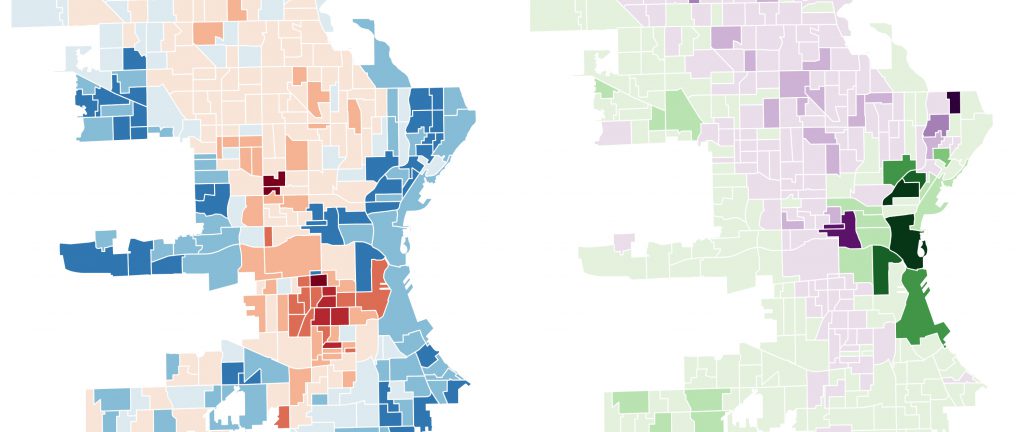
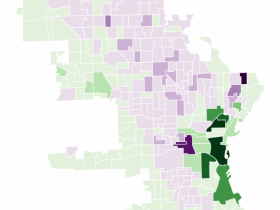
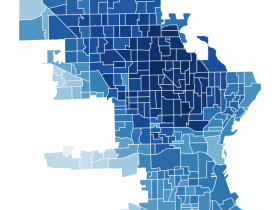
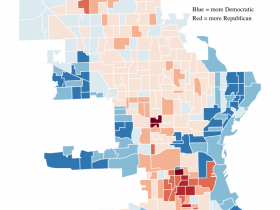
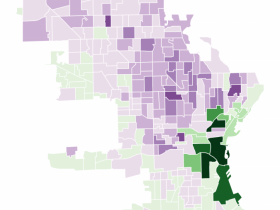
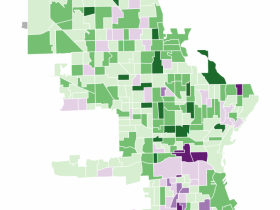










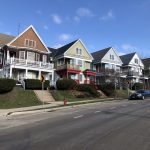








Incredible that the Hispanic shift can be seen at this granular a level.
And confirms my suspicion that if you want to push the state left you gotta build a ton of housing attractive to young people in Milwaukee and Madison.